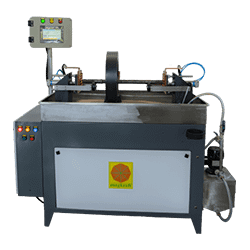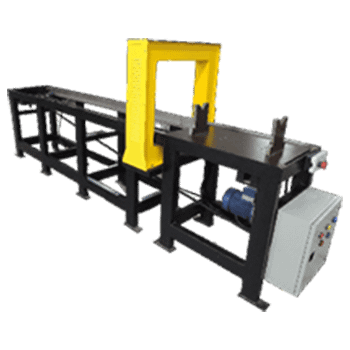Magnetic Particle Inspection of Bull Gears
The bull gear assumes a crucial role in the operation of a vehicle’s differential system. Positioned within the differential housing, it interfaces with the pinion gear, facilitating the transmission of torque from the driveshaft to the wheels. This mechanism enables seamless turns while accommodating variations in wheel speeds. Consequently, it permits the outer wheel to rotate faster than the inner one during turns, thereby improving stability and control.
Maintaining the integrity of the bull gear is imperative, and Magnetic Particle Testing (MPT) serves as a pivotal tool for achieving this goal. As a vital component subjected to substantial stress and load, the bull gear is prone to surface cracks, defects, and imperfections that could compromise its structural robustness. MPT involves the application of a magnetic field and iron particles to the gear’s surface, effectively bringing hidden flaws to light. Early identification of such issues through MPT enhances safety, mitigates the risk of gear failures, and ensures optimal performance.
Incorporating regular MPT into maintenance and quality assurance protocols is indispensable for accident prevention, extending the bull gear’s lifespan, and upholding the overall reliability of the vehicle’s drivetrain.
The distinctive geometry of the bull gear introduces a unique challenge in determining the appropriate magnetization method. An optimal approach involves clamping the bull gear between the headstock and tailstock along its diameter and conducting current through it. However, due to the small surface area of the tooth in contact and the high current involved, there is a significant risk of localized heating and arcing on the tooth. This thermal effect could alter the microstructure of the tooth, potentially leading to bull gear failure during service. Moreover, this method necessitates magnetizing each surface at least twice, increasing inspection time and potentially overlooking indications in overlapping areas.
Therefore, there is a need for a method that enables the magnetization of the entire bull gear surface in a single operation without causing damage to its teeth.
To achieve this objective, we have developed specialized equipment featuring a copper conductor for circular magnetization of the bull gear. This conductor passes through the bore of the bull gear, and a high current is applied following the formula:
Head Shot Current = 20 X Diameter of bull gear (mm)
To establish a perpendicular field, an encircling coil is employed. Determining the current requirement for the coil involves using QQI shims, as standard formulas do not directly apply to the bull gear’s geometry. Given the weight of the bull gear and the challenge of holding it vertically, a vertical clamping arrangement is adopted, placing the gear horizontally. A turntable mechanism facilitates the rotation of the bull gear during inspection, ensuring a comprehensive examination of its magnetic properties while mitigating potential damage to the teeth and optimizing inspection time.
Conventional Technique
A two-vector PLC-based bench-type magnetic crack detector machine is used to perform testing on the crank shafts
- Ensure thorough cleaning and drying of the bull gear’s surface before inspection.
- Position the bull gear on the turntable.
- Initiate the testing sequence by pressing the ‘Cycle Start’ button.
- Move the turntable to position it underneath the coil.
- Lower the coil assembly, including the central conductor, onto the bull gear.
- Apply a magnetic solution bath to the bull gear.
- Stop the flow of the bath.
- Press the ‘Mag’ Button.
- Allow the current to pass through the central conductor & the coil.
- Monitor the reading on the digital metering unit.
- Raise the coil and central conductor assembly.
- Retract the turntable.
- Inspect the bull gear under UV light for all defects. Rotate if necessary.
- Flip the bull gear and repeat all the above steps.
- Perform demagnetization.




